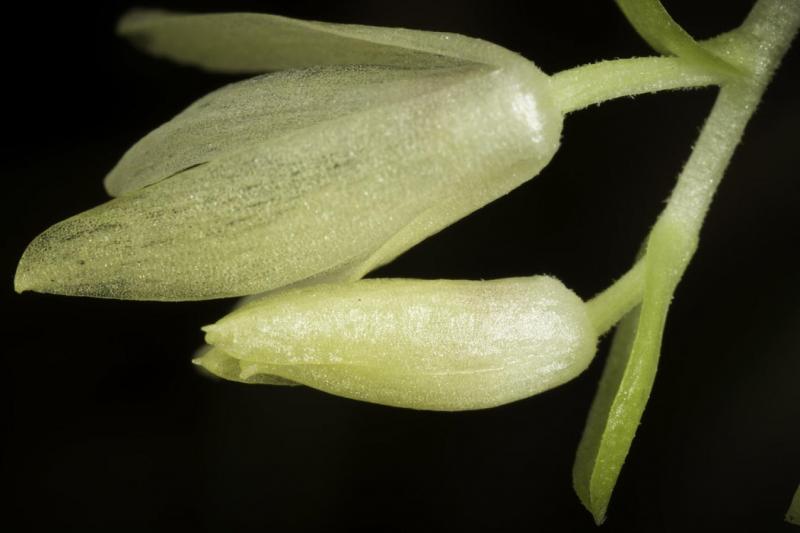Eria ovata
Also known as: The Ovate Eria or In Japan Ryukyu-seki-koku - Osima-seki-koku in the subfamily: Epidendroideae
Native to: Malaysia
General Information
The Ovate Eria is a warm growing orchid belonging to the sub family Epidendroideae native to Malaysia.
Plant Description
Grows to 25-30cm. Each new growth has numerous thick erect, elliptic, lance shaped, oblong shaped leaves that grow to 1.5-16cm long. Pseudobulbs grow to 2-15cm
Flowers
Numerous fragrant blossoms appear
Fragrance
The orchid is fragrant.
Substrate(s)
- Coarse
- Medium
- Small
- Bark
- Charcoal
- Perlite
- IsFragrant
Climate
Grows at low to high elevations. Rainfall ranges from 13mm to 432mm per day, heaviest in July and lightest in February. Humidity ranges from 68% to 87%, highest in September and lowest in April. Temperature ranges from 17C to 31C, highest in April (21C to 31C) and lowest in January (17C to 27C).
Watering
These orchids are sensitive to excessive watering and should only be watered when they look thirsty. Water infrequently and ensure that the roots are dry before watering. Keep an eye on them especially during hot weather as overwatering can lead to rot, whereas underwatering may result in wilting or shriveling, which while unattractive, will not kill the plant.
Keep moisture levels up during hot weather as the plant is prone to dehydrationFertiliser
Apply liquid based fertiliser per recommended directions. They can benefit from a high phosphate fertiliser leading up to flowering season, followed by a high nitrogen fertiliser when new growth appears, and a balanced fertiliser in other times. These orchids can also tolerate slow release fertiliser applied 1-2 pellets per cup (250ml) of media.
Use balanced fertiliser during Spring and Summer. Apply fertiliser regularly at half strength year round. Use a high Nitrogen fertiliser during Spring and Summer. Use a high Phosphorous fertiliser during Summer.Potting
Use water retentive media such as moss to prevent roots from drying out quickly This plant does very well in baskets or suspended pots This plant does well mounted to Cork slabs. Repotting is best done annually and in a pot the same size or only slightly larger than the previous one.






















